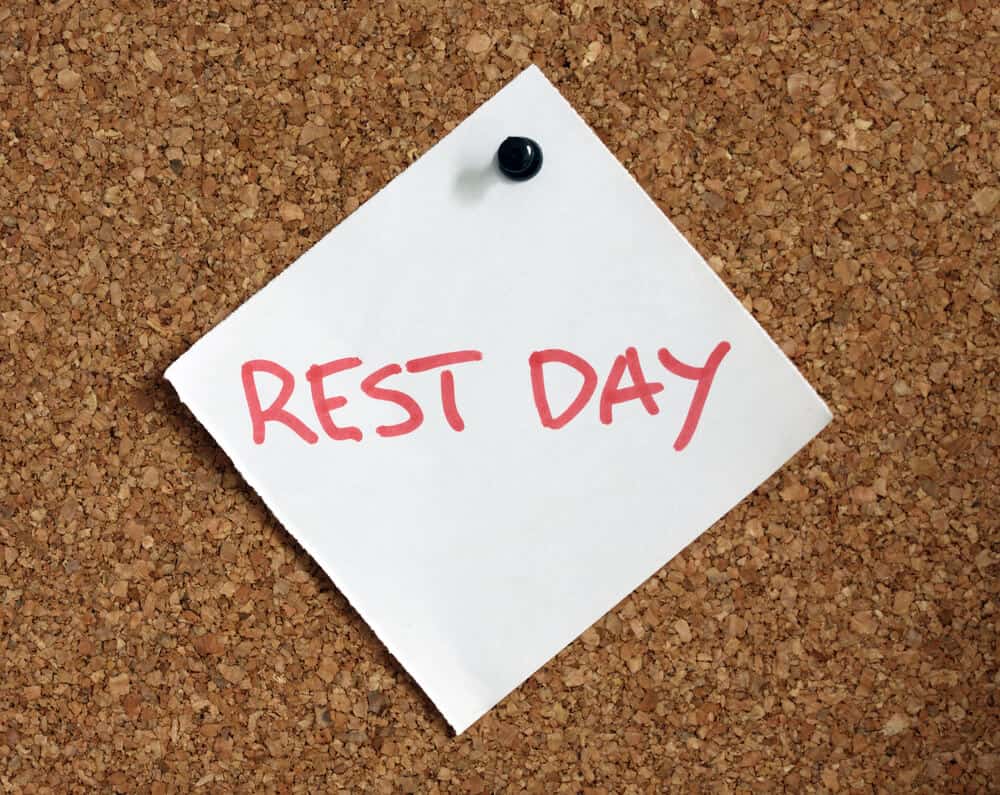Running a 10k seems like a challenge, a big deal, doesn’t it?
It is a challenge, but all it takes is some resilience and an organized training plan, and you’ll be able to tackle that race like a champ. Training for a 10k isn’t much different from training for a half marathon.
So, all you need to do is prepare for some half marathon training—only for a much shorter distance!
How to Prepare for a 10k in 13 Weeks
If you only have 13 weeks to prepare for your 10k run, don’t worry! I’ve got your back; here’s everything you need to start doing now.
Know When to Start Running
Thirteen weeks may not be all the time in the world; I’ll give you that. However, that doesn’t mean you should jump headfirst into your training plans. Chances are, you’ll develop an injury because your body isn’t ready for the leap yet.
Before attempting to run long distances, you should be able to walk for at least an hour without feeling exhausted. When you’re capable of walking, only then can you start running. Otherwise, you’d be out of shape, and running will only give you overuse injuries.
Remember that a 10k race is long for a beginner. Start with easy walks, then upgrade to a brisk pace. After that, you can walk your way into the running part of the plan.
Alternate Between Walking and Running
If you’re still a beginner runner, you need to alternate between walking and running—at least for the first few weeks of your plan. At first, walk for the major part of your session and add a short burst of jogging. As you go forward with the training plans, you can start jogging more and walking less.
Alternating between the two exercises makes sure you have a lower risk of developing an injury. Walking builds your muscles, and running builds your stamina—it only seems logical to give them both parts of your training plans.
When you walk and run in the same session, you won’t feel too tired when you’re done. The walking part will give you time to breathe and regain your energy.
Plan for Your Rest Days Well

Your rest days are equally as important as your active days. You need to plan them well and schedule them beforehand. Keep in mind that rest days are the only chance for your muscles to recover. If you take them away, your muscles will be fatigued.
No matter how prepared you are with your running gear and training plan, you’re still making much more effort than usual.
When planning for the 13-week period before your 10k race, including at least two days of rest each week. You can make them three at the start and include cross-training in one of them starting from week six.
Draw a Line and Don’t Cross It
Beginner runners tend to push their bodies too hard sometimes. While it’s a natural instinct to push ourselves beyond our limits, that won’t get you anywhere. You need to keep your training pace reasonable, so you’re building your endurance but not increasing your risk of injuries.
As a rule of thumb, you should run at a pace that allows you to have a conversation. Remember that a 10k race is more about the distance than the speed, so you don’t need to go out of your way trying to outrun your fellows.
In the first few days of your training plan, try to test your limits to know where they are. You should be aware of the lines you shouldn’t cross to prevent unnecessary injuries that’ll only take time from your 13-week plan.
Create Your Training Plan Carefully

Thirteen weeks are a lot, but that doesn’t mean you should go about them randomly. Planning doesn’t only make you more focused on your goal, but it also provides a structure you can follow to avoid losing motivation.
You need to have a plan for each week. If it’s not too detailed, it should at least have a rough estimation of the distance you’ll cover or the number of running sessions you’ll have.
You’ll have to create the plan yourself according to your fitness level, and the time you have on your hands.
Here are guidelines to follow when creating the plan.
- Monday: Easy walking session
- Tuesday: Rest (In later weeks, you can do endurance or cross-training)
- Wednesday: Running workout
- Thursday: Rest
- Friday: Running workout
- Saturday: Rest (In later weeks, change it to quick walks or easy runs)
- Sunday: Running workout
Now, we have three days of running, three days of rest, and one day of walking. In the later weeks, you can have only two days of rest and one day of cross-training. You can go about this plan as you prefer, as long as you make sure to run for three days a week.
How to Prepare for a 10k in 13 Weeks: Plan Your Weeks Like This
Now that you know what your week should look like, here are some guidelines for the three days of running workouts.
Week 1
- Running day 1: 1-min run + 2-min walk (x10)
- Running day 2: 1-min run + 2-min walk (x12)
- Running day 3: 1-min run + 1-min walk (x8)
Week 2
- Running day 1:2-min run + 2-min walk (x6)
- Running day 2: 2-min run + 2-min walk (x8)
- Running day 3: 2-min run + 1-min walk (x6)
Week 3
- Running day 1: 3-min run + 2-min walk (x4)
- Running day 2: 3-min run + 1-min walk (x4)
- Running day 3: 5-min run + 3-min walk (x2)
Week 4
- Running day 1: 4-min run + 2-min walk (x4)
- Running day 2: 4-min run + 1-min walk (x4)
- Running day 3: 5-min run + 2-min walk (x3)
Week 5
- Running day 1: 5-min run + 2-min walk (x3)
- Running day 2: 5-min run + 1-min walk (x3)
- Running day 3: 5-min run + 1-min walk (x3)
Week 6
- Running day 1: 5-min run + 2-min walk (x4)
- Running day 2: 5-min run + 1-min walk (x4)
- Running day 3: 7-min run + 3-min walk (x2)
Week 7
- Running day 1: 7-min run + 3-min walk (x3)
- Running day 2: 7-min run + 2-min walk (x3)
- Running day 3: 10-min run + 5-min walk (x2)
Week 8
- Running day 1: 10-min run + 3-min walk (x2)
- Running day 2: 10-min run + 2-min walk (x2)
- Running day 3: 10-min run + 1-min walk (x2)
Week 9
- Running day 1: 12-min run + 3-min walk (x2)
- Running day 2: 12-min run + 2-min walk (x2)
- Running day 3: 10-min run + 2-min walk (x3)
Week 10
- Running day 1: 10-min run + 2-min walk (x3)
- Running day 2: 15-min run + 3-min walk (x2)
- Running day 3: 15-min run + 2-min walk (x2)
Week 11
- Running day 1: 20-min run + 5-min walk (x2)
- Running day 2: 20-min run + 3-min walk (x3)
- Running day 3: 30-min run
Week 12
- Running day 1: 30-min run
- Running day 2: 25-min run + 5-min walk (x2)
- Running day 3: 40-min run
Week 13
- Running day 1: 25-min run + 5-min walk (x2)
- Running day 2: 30-min run + 5-min walk (x2)
- Running day 3: 50-minute running
Get Enough Nutrition
When training for a 10k, it’s important to make sure you’re getting enough nutrition. Your diet should consist of healthy amounts of carbs, protein, and fats. Carbs are absolutely essential because they’re responsible for giving you enough energy to finish your race.
Meanwhile, protein is vital because it works on repairing your muscles and building them.
As for fats, you’ll want to make sure your daily diet has a reasonable amount of healthy fat to maintain good nerve function.
It’s okay to have a cheat day every week but stay away from greasy food and soda as much as you can. Fuel up on a lot of fruits and veggies; make sure to drink enough water.
Stretch Your Muscles Every Time You Workout

Before and after each workout, make sure to stretch your muscles. It’s better to stretch all of your lower body, but if you want to focus on some areas, target the hamstrings and the quads.
The hamstrings form the backs of your thighs, while the quads form the front and sides. The two muscle groups are equally important when it comes to running.
They’re responsible for the movement of your whole legs, so if they’re not stretched properly, your knee flexion won’t be as great as you think it is.
Work on Both Speed and Endurance
If you add a couple of miles to your weekly mileage each week, you’re working on your endurance, not your speed.
On the other hand, if your training is made up of sprinting for short distances without adding miles, you’re only working on your speed and ditching your endurance.
To cross the finish line of a 10k race, you need to work on both. By that, I mean you should try different kinds of running throughout your 13 week plan.
Here are three running workouts you should work on:
Regular Pace Running
Running at a regular pace, where you can have a conversation comfortably, is an integral part of your training plan. It builds endurance and helps you test how fast your body can go without panting or breathing hard.
Long-Running
Long-running includes running for long distances at an easy pace. You don’t want to be running quickly. On the contrary, an easy pace will help build your endurance better.
Week after week, you should add some distance to your long runs.
Speed Running
To work on your speed, you need to incorporate some speed work into your weekly schedule. You try some fartlek running or a tempo run. Interval running, in general, is a great way to work on your speed.
Work on Your Core Muscles
Running isn’t only about your leg muscles. If your core muscles are well-developed, you’ll be able to run for longer distances without feeling tired. Not to mention, the core muscles engage in almost every move we make. When they’re well-built, your body will work better in unison, and you’ll find yourself running in the correct position without trying.
Ask any professional runner, and they’ll confirm that.
If you wonder what the core muscles are, they’re the ones within your back and abdominals. These muscles are basically the glue that’s holding your spine together. They extend to the pelvis, including the pelvic floor, the obliques, and the transversus abdominis.
If their place doesn’t tell you a lot about their importance, I don’t know what will.
Incorporate Cross Training In Your Plan
Cross-training gives you a chance to work on your endurance without running. You can’t be running every day; it’ll have its toll on your body and muscles. That’s where incorporating other types of exercises in your plan comes in handy.
Instead of three days of rest, you can rest for only two days and assign the last day for cross-training. You can try cycling, which builds the leg muscles and improves your endurance by a big shot.
Alternatively, you can go for some strength training. Weight lifting grows your muscles, causing your body to burn calories more efficiently and frequently.
Swimming is also an excellent choice if you have an available pool nearby. It works all your muscle groups like nothing else, and it’s fun!
Sleep a Lot
Even a 10k race isn’t worthy of losing your sleep over. In fact, you need to sleep enough if you ever want to cross that finish line. Sleep deprivation exhausts your brain and renders you unable to focus. You’ll find it hard to concentrate on anything, and your risk of developing an injury becomes higher.
On top of that, sleep deprivation delivers a blow to your immune system. It prevents it from producing the cytokines and antibodies that protect your body from viruses.
If your immunity is down, catching a viral or bacterial infection will be easier than ever, and with Covid still active, you don’t want that.
Make sure you get at least six hours of sleep every day. Your body needs to rest for your muscles to recover.
Look for a Race to Register
If there aren’t 10k races held frequently in your area, you’ll want to start looking at least a month before the race day. Four or six weeks before your training plan ends, start searching for 10k races held in your town and nearby towns.
You’ll want to save your spot because these races have capacities, and they get filled fast.
When you register for the race, make sure you get your bib number and mark the date on your calendar, so there’s no chance for mistakes.
Visit the Race Course Once or Twice
It’d be wise to visit the racecourse once or twice before the race day. If you’re prone to anxiety and stress before the race, familiarizing yourself with the course will ease your anxious thoughts.
Even if you’re not nervous, getting familiar with your surroundings is recommended. That way, you know what you’re in for on the race day.
There are also other advantages, such as memorizing the directions if it’s your first time in the area.
You can have one or two training sessions in the course before the actual race.
Start Slow and Finish Fast
Now that you’re done training, stretching, and fuelling up for the race, it’s time for the final running tips. Each runner will approach his 10k or marathon differently. Some runners start fast, and others save their speed for the last few minutes of the race.
In my opinion, starting fast will only deplete your energy and leave you crumbling by the end of the race. Start slow, leaving the other runners to pass you. It’s okay; by the end of the race, you’ll have possibly passed them again.
Starting slow doesn’t mean you should walk. For the first three kilos or so, run at a moderate pace—one that allows you to hold a conversation.
Then, until the eighth kilo, take your speed up a notch. Save the sprinting for the last two kilos, where most runners who started fast will likely be drained.
Final Thoughts On How To Prepare For A 10k In 13 Weeks
Running a 10k is a big deal. It needs passion, patience, and a great deal of resilience. You have enough time to prepare, but time isn’t everything. You also need to be focused and determined to cross that finish line.
After that, everything will seem easy. You’ll easily drop into a training routine, and by the end of the 13 weeks, you’ll be able to run a 10k. Remember to keep your eyes on the goal and push the negative thoughts from your head.
